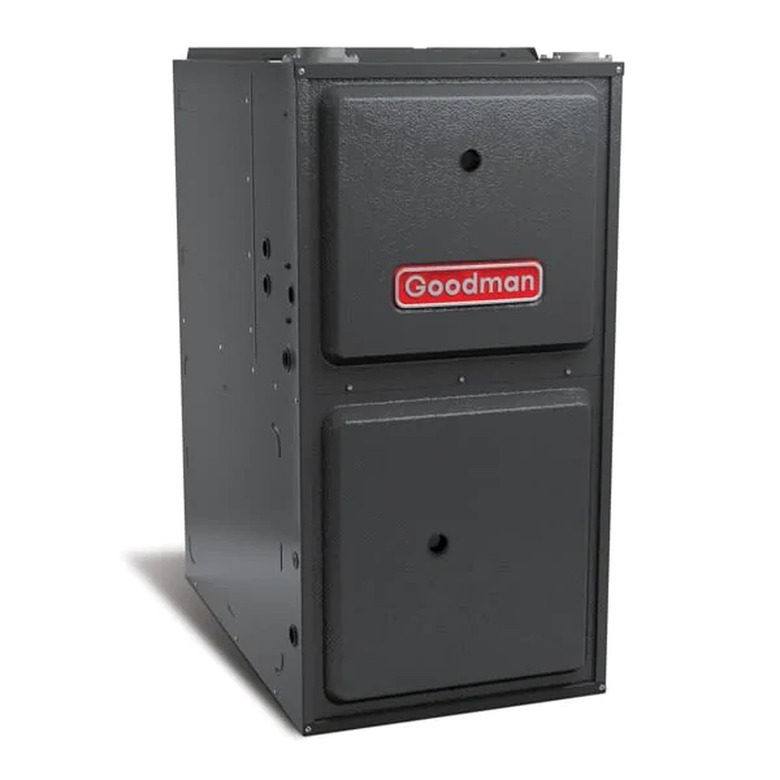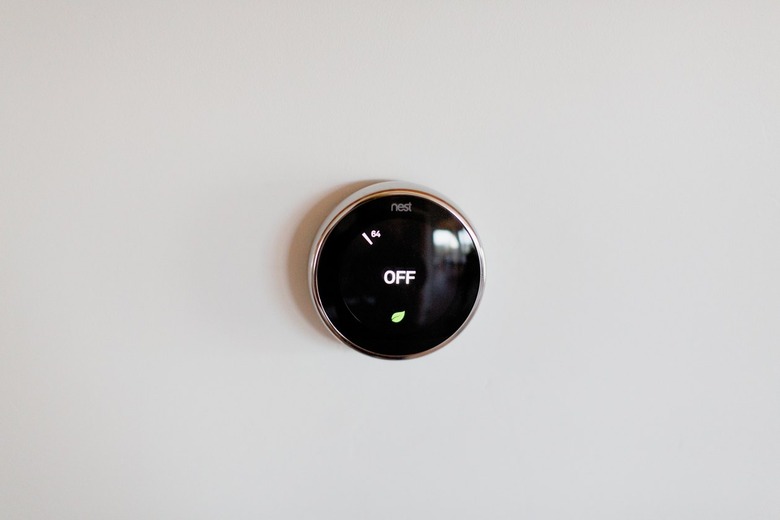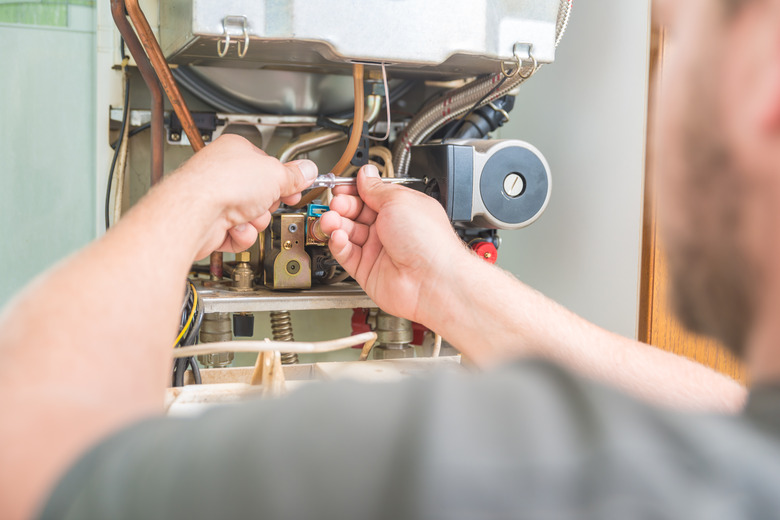10 Common Issues With High-Efficiency Furnaces
We may receive a commission on purchases made from links.
High-efficiency furnaces differ from older standard gas furnaces thanks to sealed combustion, a secondary heat exchanger, a variable-speed blower and an electronic ignition, all of which can become dirty or simply wear out. In the event of poor heating performance, some basic furnace troubleshooting techniques can help you pinpoint the mechanism that needs to be cleaned or replaced.
Some issues relate to all furnaces, whereas others, like a blocked condensate drain or clogged air intake vent, are only seen in high-efficiency units. Although you can try to fix a few issues yourself, some definitely require the trained eye of an HVAC technician.
1. Gas Line Is Off
1. Gas Line Is Off
If the gas furnace tries to start up but doesn't produce any heat, check to make sure it's receiving gas. Gas lines have on/off valves just like water lines. If the gas valve is perpendicular to the pipe so that it looks like a "T," the gas is off. Turn it so that the valve lines up with the pipe. Note that homes usually have multiple gas line shutoff valves, so you may need to trace the gas line back farther to ensure all valves are open. In the event that you're behind on gas bill payments, the gas company can lock the main gas valve leading to your home. Call the gas company to resolve the issue.
2. Power Is Off or Breaker Tripped
2. Power Is Off or Breaker Tripped
Gas-fueled furnaces also require electricity to power mechanisms, like the blower motor, and in the case of high-efficiency furnaces, the electric ignition. If the furnace seems to be completely dead, make sure the power is on. There should be an on/off switch near the furnace that looks like a light switch. Make sure this is flipped up in the "on" position. Check your circuit breaker box to make sure the furnace breaker is also in the "on" position.
3. Thermostat Power Failure
3. Thermostat Power Failure
If the furnace has both electricity and gas but still won't turn on, the problem may lie in the thermostat, which tells the furnace when to fire up. If the furnace never gets this signal from the thermostat, it won't work. Thermostats are either hardwired to your home's electric panel or powered by batteries. The wires can short out, or the batteries can die, resulting in a nonfunctioning furnace either way.
If the thermostat does not have batteries, you can also check to make sure the relevant breaker wasn't tripped. Finally, don't forget to make sure the thermostat is set to "heat" and a temperature higher than the current temperature.
4. Poor Airflow in Ducts
4. Poor Airflow in Ducts
All furnaces — whether standard or high-efficiency — draw air from inside your home through return ducts, pass it over a heat exchanger and redistribute it to your home through supply ducts. An obstruction in the path of airflow will cause problems due to increased resistance and pressure inside the furnace. The furnace has to work extra hard to combat the increased air resistance and to heat your home with less air supply. This results in greater electricity consumption and faster degradation of mechanical parts.
If the blockage is in the supply ducts, the air exiting the registers won't feel as forceful as it should. Make sure the registers are open and aren't blocked by furniture. If you have floor registers, remove the cover and reach in and see if something fell in and blocked the duct. Another telltale sign of an obstructed supply or return duct is a whistling sound near the site of the obstruction. Sometimes, the blockage is simply a filter that's dirty or that has too many pleats.
If your ducts have dampers to redirect airflow away from unused areas of the home, make sure the dampers are open where you expect them to be open. They may have closed accidentally. Finally, consider a service call with a pro to assess the ductwork. Professional HVAC technicians have cameras they can feed through the ducts to discover blockages. They can also clean the ducts if necessary.
5. Obstructed Combustion Intake or Exhaust Vents
5. Obstructed Combustion Intake or Exhaust Vents
High-efficiency furnaces feature an air intake vent that leads directly to the combustion chamber, ensuring there's an adequate supply of fresh air for combustion to occur. The combustion process also produces gases, such as carbon monoxide, that are exhausted outside via a second vent. It's bad news if either vent gets blocked. Your furnace won't heat properly or ignite if the intake vent gets blocked, and a blocked exhaust vent exposes your family to deadly carbon monoxide poisoning.
These vents should have caps on them to prevent debris — including snow — from falling into the pipe. The caps also prevent birds from building nests on the pipes. Extreme weather may cause the caps to break off and/or debris may fly under the cap and into the pipe. Look at the pipes above your roof line and note if they have caps. If they don't, call an HVAC technician to clean the vent and install a new cap.
6. Exhaust Gas Backflow
6. Exhaust Gas Backflow
In addition to blockages, poor vent design can also cause combustion gases to linger or flow back into the furnace instead of exhausting outside. The combustion gases prevent oxygen from entering the combustion chamber through the intake vent. As a result, the furnace will produce a weak flame, your home will remain chilly, the furnace will run longer than usual and your gas bill will increase. If a clog is not the problem, the vents may need to be adjusted or reinstalled to promote better airflow in and out of the combustion chamber.
7. Problems With Safety Sensors and Switches
7. Problems With Safety Sensors and Switches
Furnaces have a series of built-in safety switches that shut down the furnace when a problem is detected. For example, the pilot sensor only allows gas to enter the combustion chamber if the ignition switch is on. If the unit won't turn on and you've already determined that the gas line is open, a faulty pilot sensor or ignition switch could be the culprit. It's best to have this confirmed and fixed by an HVAC technician rather than addressing it yourself.
The limit switch shuts down the unit if the heat exchanger gets too hot. This can happen if the blower motor isn't working properly. Once tripped, the limit switch has to be reset before the furnace will run again. The same is true of the roll-out switch, which shuts down the heating system if the flames "roll out" past the burner. Finally, if you took off the furnace door to look inside, you triggered another safety switch. The unit should not run until the door is back in place.
8. Clogged Condensate Drain
8. Clogged Condensate Drain
Another safety sensor called a pressure switch will trigger if the condensate pipe fails to drain properly. The pressure switch prevents the ignition sequence from starting, so the unit will not turn on if the condensate drain is full. Unique to high-efficiency furnaces because they condense combustion gases to reduce fuel waste, condensate drains allow the liquid to escape the system.
Like the drain under your sink, condensate drains include a P-trap to prevent gases from exhausting through the pipe. This trap can become clogged, especially if the furnace filter isn't frequently changed or cleaned. The condensate drain line can also freeze in extreme weather. Clearing a condensate drain P-trap is a job best left to the professionals, who know how to safely and correctly take apart the P-trap (if necessary) and reinstall it. They'll also be able to ensure water enters the P-trap after the blockage clears. Some furnaces won't start if the P-trap is dry.
9. Control Board Malfunction
9. Control Board Malfunction
Furnaces include a circuit panel called a control board, which is basically a mini computer with a narrow focus: running the furnace. Like any computer, the control board can wear out or malfunction, especially if it is exposed to dust or moisture. The control board also powers a warning light that will help you understand what's wrong with the furnace. Look for a chart on the side of the furnace panel that tells you what it means if the light is blinking or if it is a particular color. If it doesn't make sense for a warning light to be on, the control board itself may be the problem.
On the other hand, a malfunctioning control board won't necessarily display a warning light. If you notice fluctuating temperatures inside your home even though you haven't touched the thermostat settings, the control board is likely shorting out.
An HVAC technician can run diagnostics on the control board to figure out whether the problem truly stems from the board or if it can be traced back to the thermostat or other component.
10. Blower Motor Malfunction
10. Blower Motor Malfunction
A high-efficiency furnace's variable-speed blower motor works best when it's kept clean and paired with a fresh air filter. A dirty or ineffective air filter increases the likelihood that dirt and debris will be pulled through the filter and into the furnace. The first mechanism with which the dirt will come in contact is the blower motor. Eventually, enough dirt can cause wear inside the motor on the blower belt (if applicable) or on the setscrew that holds the blower in place. Without the blower motor pulling air from the return duct and pushing it across the heat exchanger, the furnace will not operate efficiently.
You can clean the blower motor yourself. With the unit turned off, open the lower furnace door and wipe down the blower fan with a damp cloth. Check the air filter while you're at it. If you have pets, you may need to change the filter once every three months at minimum.
When to Call an HVAC Technician
When to Call an HVAC Technician
Homeowners can typically run through their own furnace troubleshooting checklist to rule out possible issues. In the best-case scenario, something simple, like switching out thermostat batteries, will solve your furnace problem. However, if you have to start messing with wires or the inner workings of the furnace, it's best to stop and call an HVAC technician. Although furnaces do have built-in fail-safes, it's still dangerous to mess with a unit capable of emitting gas and creating substantial heat. If you have even an inkling of doubt about what you're doing, call an HVAC technician.
After the furnace troubleshooting and repair procedure is complete, your HVAC technician may recommend scheduling annual tune-ups. It may feel like an unnecessary upsell but consider following through with this offer. Furnaces can often be repaired, but they do have a limited life span. Scheduling a tune-up with an HVAC technician can catch problems early and prolong the life of your furnace. Routinely replacing the air filter can do the same. Your furnace represents a significant investment, so taking care of it just makes sense.
References
- Jerry Kelly Heating & Air Conditioning: What Makes a High Efficiency Gas Furnace so Efficient?
- Service Champions Heating & Air Conditioning: Furnace Safety Switches Save Lives (And Shut Down Furnaces)
- ACHR News: Diagnosing and Solving Blower Motor Problems
- Hansberger: Troubleshooting Tips for High-Efficiency Gas Furnaces
- Red Rock Mechanical: Signs of a Furnace Control Board Problem


